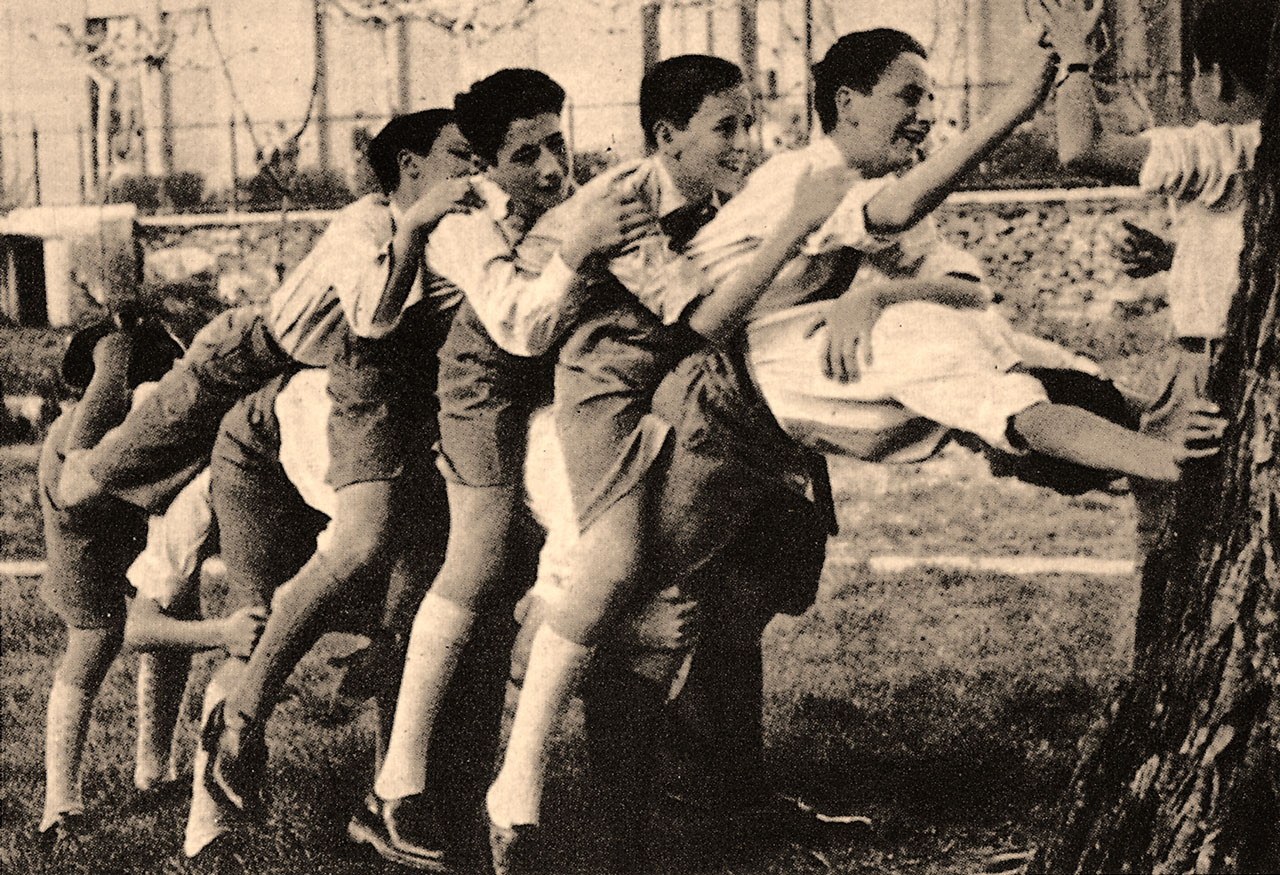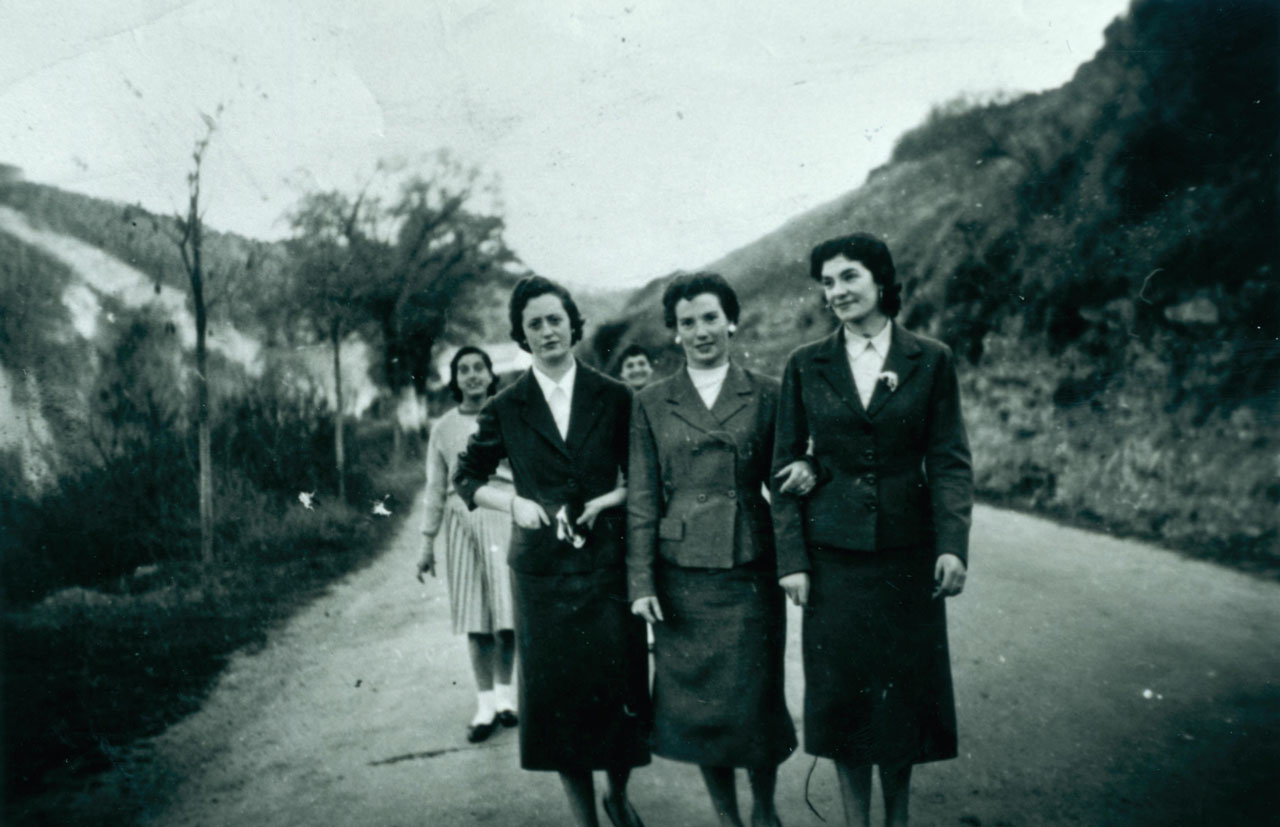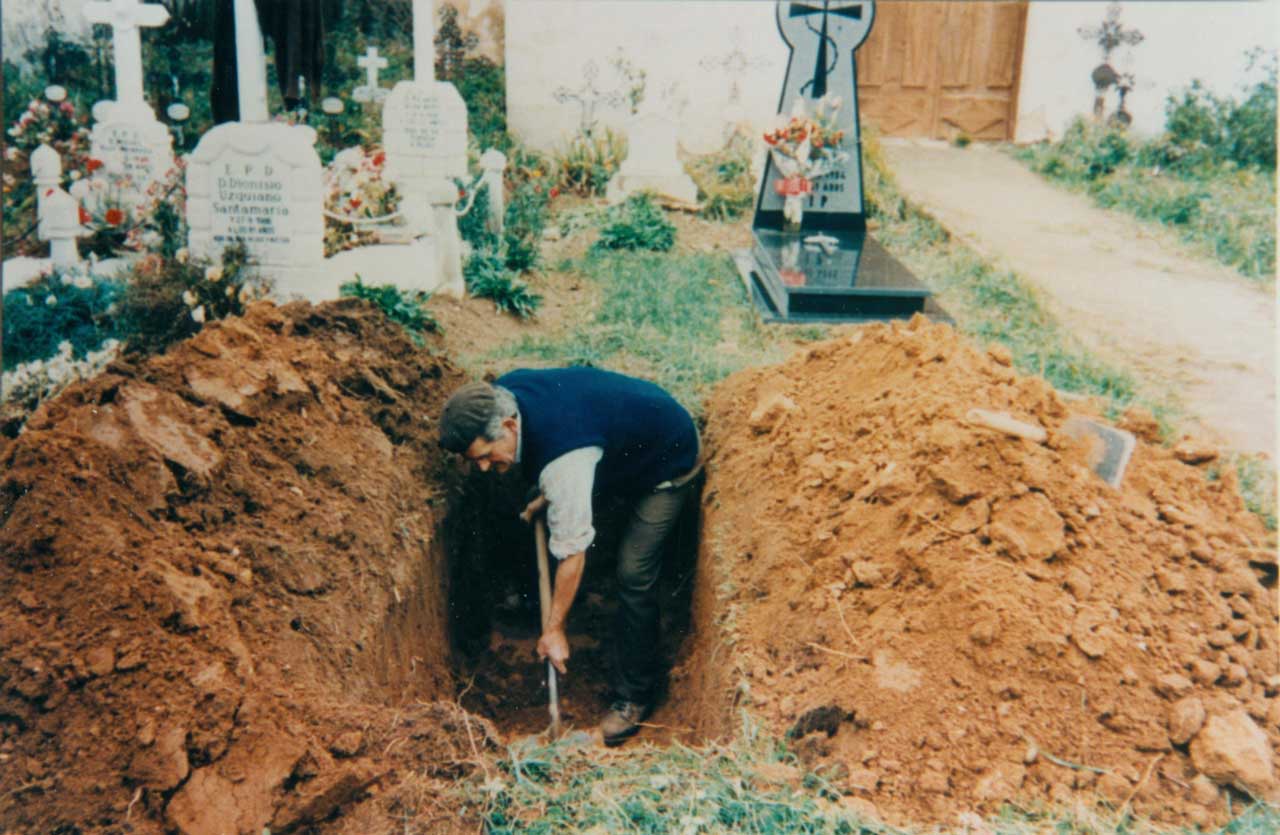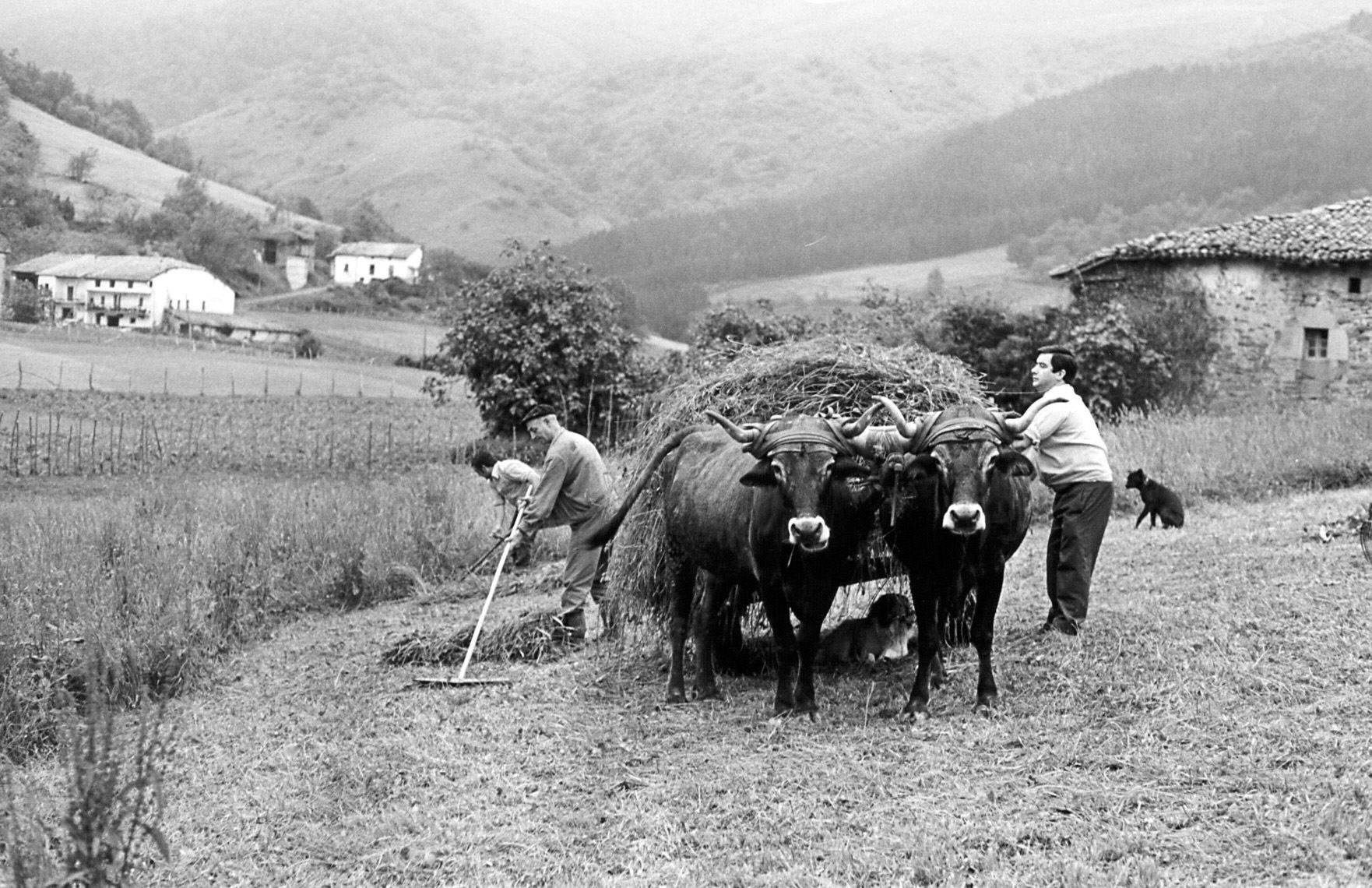Diferencia entre revisiones de «Main Page/en»
De Atlas Etnográfico de Vasconia
| Línea 28: | Línea 28: | ||
====[/atlas/casa/Muskildi-2011.jpg|Muskildi (Z), 2011. Source: Michel Duvert, Etniker Euskalerria Groups.|“It has quite rightly been said, therefore, that any human settlement is the amalgamation of a little humanity, a little land and a little water.”|''J. M. Barandiaran'']==== | ====[/atlas/casa/Muskildi-2011.jpg|Muskildi (Z), 2011. Source: Michel Duvert, Etniker Euskalerria Groups.|“It has quite rightly been said, therefore, that any human settlement is the amalgamation of a little humanity, a little land and a little water.”|''J. M. Barandiaran'']==== | ||
| − | ====[/atlas/casa/Sanjuan-haretxa-roble-de-San-Juan-Zeanuri-1980.jpg|St John’s bunches of branches and flowers. Zeanuri (B), 1980. Source: Ander Manterola, Etniker Euskalerria Groups.|Different types of rites, such as attaching the St. John’s branch, San Juan haretxa, to the doorposts, were performed around the St. John’s Day festivities.|| | + | ====[/atlas/casa/Sanjuan-haretxa-roble-de-San-Juan-Zeanuri-1980.jpg|St John’s bunches of branches and flowers. Zeanuri (B), 1980. Source: Ander Manterola, Etniker Euskalerria Groups.|Different types of rites, such as attaching the St. John’s branch, San Juan haretxa, to the doorposts, were performed around the St. John’s Day festivities.||]==== |
| − | ====[/atlas/casa/Heredero-etxegaia-de-una-familia-de-Zeanuri-1920.jpg|Heir of the family. Zeanuri (B), c. 1920. Source: Labayru Fundazioa Photograhic Archive: Felipe Manterola Collection.|The widespread practice in the territories under charter law was for one of the children, either male or female, to continue with the family tradition of keeping up the farmstead and its belongings.|| | + | ====[/atlas/casa/Heredero-etxegaia-de-una-familia-de-Zeanuri-1920.jpg|Heir of the family. Zeanuri (B), c. 1920. Source: Labayru Fundazioa Photograhic Archive: Felipe Manterola Collection.|The widespread practice in the territories under charter law was for one of the children, either male or female, to continue with the family tradition of keeping up the farmstead and its belongings.||]==== |
| − | ====[/atlas/casa/La-cocina-centro-de-la-vida-familiar-Andoain-1920.jpg|The kitchen, heart of the home. Andoain (G), c. 1920. Source: Aguirre Archive.|Gure etxean sua batzen, gure etxean aingeruak sartzen. <br />''Angels dance happily in a clean house.''|| | + | ====[/atlas/casa/La-cocina-centro-de-la-vida-familiar-Andoain-1920.jpg|The kitchen, heart of the home. Andoain (G), c. 1920. Source: Aguirre Archive.|Gure etxean sua batzen, gure etxean aingeruak sartzen. <br />''Angels dance happily in a clean house.''||]==== |
| − | ====[/atlas/casa/Fuego-bajo,-chapa-y-cocina-de-butano.-Ajuria-(B),-2011.jpg|Hearth, wood-burning stove and butane cooker. Neighbourhood of Aiuria (Muxika-B), 2011. Source: Segundo Oar-Arteta, Etniker Euskalerria Groups.|Etxe onak, txingar ona. <br />''A good fire in a good home.''|| | + | ====[/atlas/casa/Fuego-bajo,-chapa-y-cocina-de-butano.-Ajuria-(B),-2011.jpg|Hearth, wood-burning stove and butane cooker. Neighbourhood of Aiuria (Muxika-B), 2011. Source: Segundo Oar-Arteta, Etniker Euskalerria Groups.|Etxe onak, txingar ona. <br />''A good fire in a good home.''||]==== |
| − | ====[/atlas/casa/Caserio-Munekogoikoa-Barrio-Urigoiti-Orozko-1994.jpg|Munekogoikoa Farmhouse. Neighbourhood of Urigoiti (Orozko-B), 1994. Source: Edurne Romarate, Etniker Euskalerria Groups.|The oldest farmsteads are those where the use of timber was pivotal, both for its internal and external structure.|| | + | ====[/atlas/casa/Caserio-Munekogoikoa-Barrio-Urigoiti-Orozko-1994.jpg|Munekogoikoa Farmhouse. Neighbourhood of Urigoiti (Orozko-B), 1994. Source: Edurne Romarate, Etniker Euskalerria Groups.|The oldest farmsteads are those where the use of timber was pivotal, both for its internal and external structure.||]==== |
| − | ====[/atlas/casa/Varias-generaciones-bajo-un-mismo-techo-Zeanuri-1910.jpg|Several generations under one roof. Zeanuri (B), c. 1910. Source: Labayru Fundazioa Photograhic Archive: Felipe Manterola Collection.|Etxe beteak atsegin, etxe hutsak bihotz min. <br />''When poverty comes in the door, love leaves through the window.''|| | + | ====[/atlas/casa/Varias-generaciones-bajo-un-mismo-techo-Zeanuri-1910.jpg|Several generations under one roof. Zeanuri (B), c. 1910. Source: Labayru Fundazioa Photograhic Archive: Felipe Manterola Collection.|Etxe beteak atsegin, etxe hutsak bihotz min. <br />''When poverty comes in the door, love leaves through the window.''||]==== |
| − | ====[/atlas/casa/Caserio-Zurutuza-Zeanuri-1925.jpg|Zurututza Farmhouse. Zeanuri (B), c. 1925. Source: Labayru Fundazioa Photograhic Archive: Felipe Manterola Collection.|Etxeko habeak, etxeko berri. <br />''A fool knows more in his own house than a wise man in another’s.''|| | + | ====[/atlas/casa/Caserio-Zurutuza-Zeanuri-1925.jpg|Zurututza Farmhouse. Zeanuri (B), c. 1925. Source: Labayru Fundazioa Photograhic Archive: Felipe Manterola Collection.|Etxeko habeak, etxeko berri. <br />''A fool knows more in his own house than a wise man in another’s.''||]==== |
| − | ====[/atlas/casa/Guisando-en-fogon-bajo-Apellaniz-1981.jpg|Cooking on the hearth. Apellániz (A), 1981. Source: López de Guereñu, Gerardo. “Apellániz. Pasado y presente de un pueblo alavés” in Ohitura 0, Vitoria-Gasteiz: Chartered Government of Álava, 1981.|The kitchen in the farmsteads was where people would usually gather together and was at the heart of family life.|| | + | ====[/atlas/casa/Guisando-en-fogon-bajo-Apellaniz-1981.jpg|Cooking on the hearth. Apellániz (A), 1981. Source: López de Guereñu, Gerardo. “Apellániz. Pasado y presente de un pueblo alavés” in Ohitura 0, Vitoria-Gasteiz: Chartered Government of Álava, 1981.|The kitchen in the farmsteads was where people would usually gather together and was at the heart of family life.||]==== |
| − | ====[/atlas/casa/Predominio-de-tejados-de-vertiente-unica-Artajona-2010.jpg|Predominance of mono-pitched roofs. Artajona (N), 2010. Source: Segundo Oar-Arteta, Etniker Euskalerria Groups.|The roof was originally erected prior to the walls, foundations and other constructive elements of the house.|| | + | ====[/atlas/casa/Predominio-de-tejados-de-vertiente-unica-Artajona-2010.jpg|Predominance of mono-pitched roofs. Artajona (N), 2010. Source: Segundo Oar-Arteta, Etniker Euskalerria Groups.|The roof was originally erected prior to the walls, foundations and other constructive elements of the house.||]==== |
| − | ====[/atlas/casa/Fuego-bajo-Zeanuri-1980.jpg|Hearth. Zeanuri (B), 1980. Source: Ander Manterola, Etniker Euskalerria Groups.|Su bako etxea, gorputz odol bagea. <br />''A house without fire is like a body without blood.''|| | + | ====[/atlas/casa/Fuego-bajo-Zeanuri-1980.jpg|Hearth. Zeanuri (B), 1980. Source: Ander Manterola, Etniker Euskalerria Groups.|Su bako etxea, gorputz odol bagea. <br />''A house without fire is like a body without blood.''||]==== |
| − | ====[/atlas/casa/Familia-bereko-lau-belaunaldi-cuatro-generaciones-de-una-misma-familia-Ajangiz-1977.jpg|Four generations of the same family. Ajangiz (B), 1977. Source: Segundo Oar-Arteta, Etniker Euskalerria Groups.|The family was the cornerstone of the farmstead, and the farmsteads along with the families provided coherence and structure to the neighbourhood and society.|| | + | ====[/atlas/casa/Familia-bereko-lau-belaunaldi-cuatro-generaciones-de-una-misma-familia-Ajangiz-1977.jpg|Four generations of the same family. Ajangiz (B), 1977. Source: Segundo Oar-Arteta, Etniker Euskalerria Groups.|The family was the cornerstone of the farmstead, and the farmsteads along with the families provided coherence and structure to the neighbourhood and society.||]==== |
| − | ====[/atlas/casa/Senar-emazte-zaharrak-eta-gazteak-matrimonios-mayor-y-joven-Areatza-principios-del-siglo-20.jpg|Old and young husband and wife. Areatza (B), beginning of the 20th century. Source: Rubén de Las Hayas’ private archive.|The aim was to ensure that the family wealth, taken to be the farmstead and its belongings, would be passed on in full or only slightly diminished, and improved if possible, from parents to their offspring.|| | + | ====[/atlas/casa/Senar-emazte-zaharrak-eta-gazteak-matrimonios-mayor-y-joven-Areatza-principios-del-siglo-20.jpg|Old and young husband and wife. Areatza (B), beginning of the 20th century. Source: Rubén de Las Hayas’ private archive.|The aim was to ensure that the family wealth, taken to be the farmstead and its belongings, would be passed on in full or only slightly diminished, and improved if possible, from parents to their offspring.||]==== |
===[alimentacion|Family Diet in the Basque Country|/atlas/alimentacion.png|Food and eating habits in the family, ritual meals, celebrations and lifestyles.]=== | ===[alimentacion|Family Diet in the Basque Country|/atlas/alimentacion.png|Food and eating habits in the family, ritual meals, celebrations and lifestyles.]=== | ||
Revisión del 14:59 10 feb 2020
Cooking on the hearth. Apellániz (A), 1981. Source: López de Guereñu, Gerardo. “Apellániz. Pasado y presente de un pueblo alavés” in Ohitura 0, Vitoria-Gasteiz: Chartered Government of Álava, 1981.
House and Family in the Basque Country


House and Family in the Basque Country
The kitchen in the farmsteads was where people would usually gather together and was at the heart of family life.
Family Diet in the Basque Country


Family Diet in the Basque Country
Ogi erre berri, etxe galgarri. Soft bread at home, an unruly household.
Vegetal clothing and accessories. Egozkue (N), 1967. Source: José Zufiaurre, Etniker Euskalerria Groups.
Children’s Games in the Basque Country


Children’s Games in the Basque Country
Akerrak adarrak okerrak ditu, adarrak okerrak akerrak ditu, okerrak adarrak akerrak ditu. Tongue-twister
Traditional Medicine in the Basque Country


Traditional Medicine in the Basque Country
Ona da ardaoa, kentzeko burutik beherakoa. Treat a cold with a hot toddy.
Rites from Birth to Marriage in the Basque Country


Rites from Birth to Marriage in the Basque Country
Neskazaharrak joaten dira Madalenara, santuari eskatzera senar on bana. Folk song
Funeral Rites in the Basque Country


Funeral Rites in the Basque Country
Hildakoari hobia eta biziari ogia. The dead to the grave and the living to the roll.
Grazing in Eneabe. Zeanuri (B), 1996. Source: Labayru Fundazioa Photograhic Archive: José Ignacio García Muñoz.
Livestock Farming and Shepherding in the Basque Country


Livestock Farming and Shepherding in the Basque Country
Two millennia ago Pliny distinguished Vasconum saltus, humid and wooded, from Vasconum ager, with its grain fields and vineyards. That distinction still remains today, with regard to livestock farming.
Agriculture in the Basque Country


Agriculture in the Basque Country
That traditional agricultural knowledge came from the deep-rooted bond established with the land. Self-sufficiency entailed deep respect for the land, as their very livelihood depended on it.








